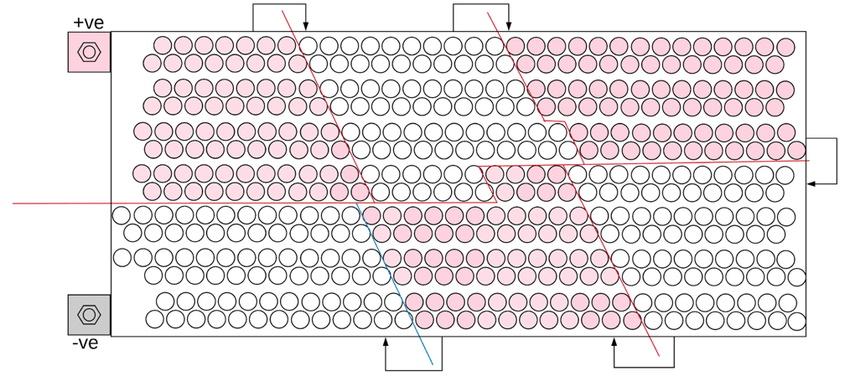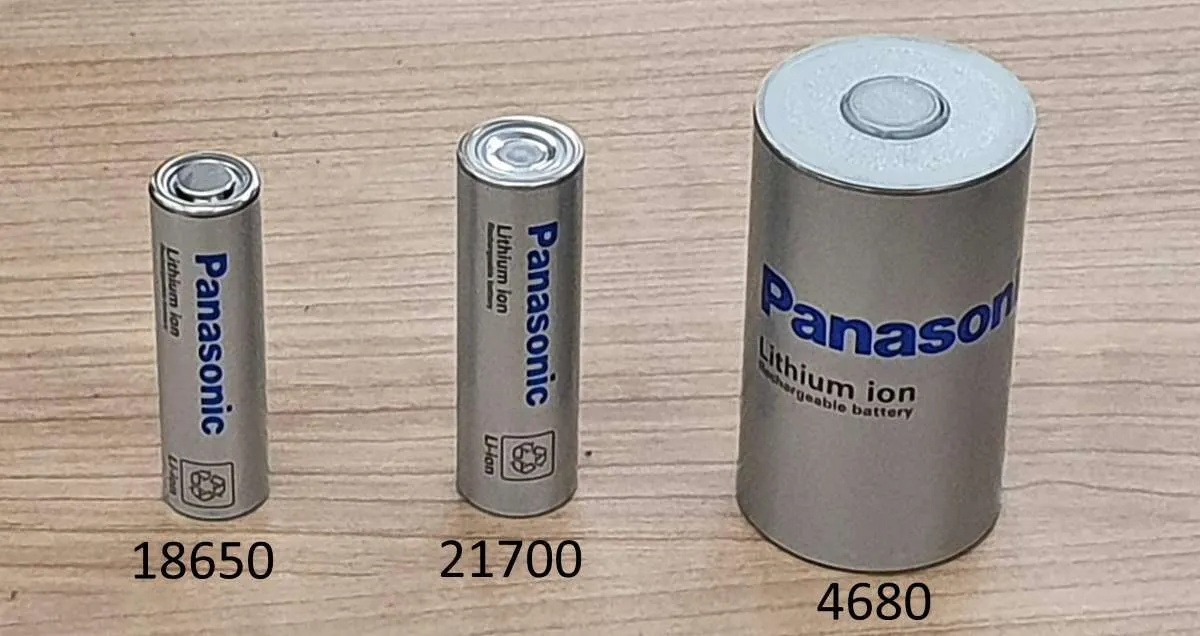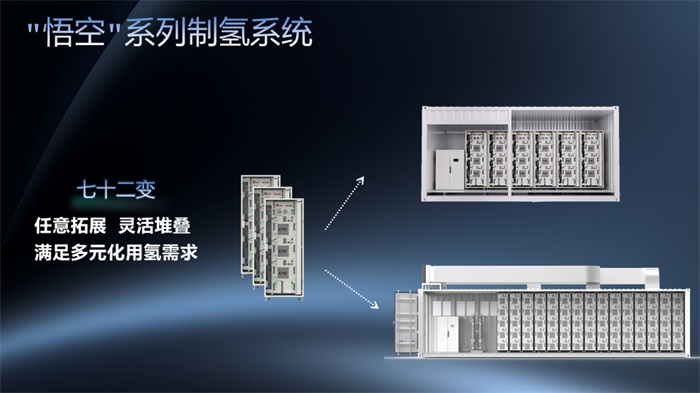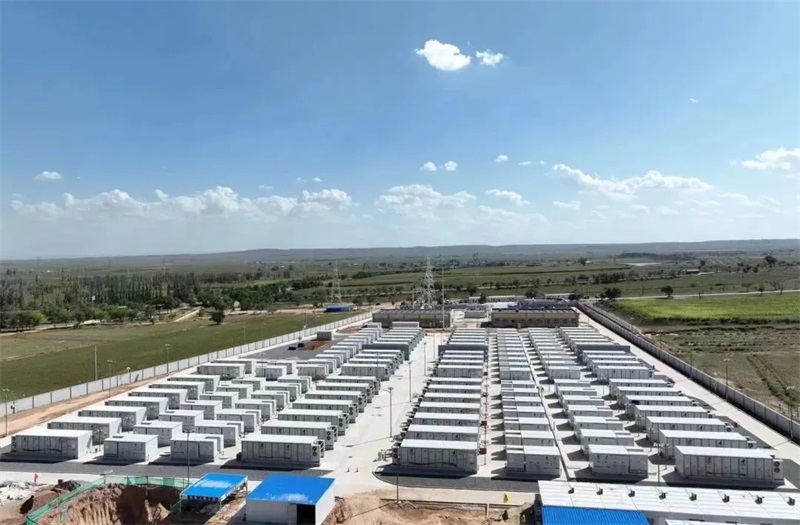About Tesla batteries and how to charge tesla battery module?
The Tesla battery module is the heart of its electric vehicles, directly influencing the vehicle’s range, performance, and safety. This article will detail the structure and technical characteristics of Tesla battery modules and provide a comprehensive guide for replacing the battery pack.
Tesla Battery Module Structure

Tesla Model S, 74p6s battery module Battery stack arrangement (Note: red battery means +ve face up)
Tesla battery packs use lithium-ion battery technology, with each pack consisting of multiple battery modules. These modules contain several battery cells, forming the entire battery system. For example, the Model S battery pack comprises 12 battery modules, each containing several dozen battery cells.
1. Battery Cells

Battery cells are the fundamental building blocks of battery modules, typically using 18650 or 2170 lithium-ion cells. The 18650 cell has a diameter of 18 mm and a height of 65 mm, while the 2170 cell is larger, with a diameter of 21 mm and a height of 70 mm. Different models may use various cell specifications to meet range and performance requirements.
2. Battery Modules
Battery modules are composed of multiple battery cells, connected electrically and through a cooling system to form a compact unit. Each module is equipped with a dedicated Battery Management System (BMS) that monitors the status of the individual cells, including voltage, temperature, and charge levels.
3. Thermal Management System
The thermal management system inside the battery pack is crucial for maintaining battery performance. Tesla employs liquid cooling technology to circulate coolant and keep the battery modules within optimal temperature ranges. This not only enhances the efficiency of the battery but also extends its lifespan.
Tesla Battery Advantages and Disadvantages
1. Advantages
· High Energy Density
Tesla battery modules utilize advanced lithium-ion technology, offering high energy density. This means that batteries of the same volume or weight can store more energy, enhancing the vehicle's range.
· Modular Design
Tesla's battery packs are composed of multiple modules. This modular design improves system flexibility and facilitates maintenance and replacement. Damaged modules can be replaced individually without needing to replace the entire battery pack.
· High Performance
The battery modules support high power output, meeting the acceleration and speed demands of Tesla vehicles. High-quality battery modules provide exceptional driving performance and acceleration.
· Effective Thermal Management
Tesla battery modules feature advanced liquid cooling systems that effectively manage the battery temperature, preventing overheating and improving efficiency. This helps extend the battery's lifespan and maintain stable performance.
· Intelligent Battery Management
Each module is equipped with a Battery Management System (BMS) that monitors the battery’s status in real-time, including charge levels, temperature, and voltage. These systems help optimize battery performance and ensure safety and reliability.
2. Disadvantages
· High Cost
The use of advanced materials and technology makes Tesla battery modules relatively expensive. This increases the cost of the battery pack and, consequently, the overall price of the electric vehicle.
· Battery Degradation
Despite the long design life of the battery modules, their capacity gradually decreases over time, affecting the vehicle's range. This degradation may necessitate module replacement to restore performance.
· Complex Maintenance
Although the modular design simplifies the replacement process, maintenance and repairs remain complex and require professional handling. Non-professional repairs could impact the overall performance and safety of the battery.
· Dependence on Charging Infrastructure
While high energy density reduces charging frequency, it relies heavily on charging infrastructure. Although Tesla has established a widespread Supercharger network, charging station coverage may still be limited in some areas.
· Environmental Impact
The production and recycling of batteries can have environmental impacts. Despite Tesla's efforts to improve eco-friendly technologies, battery production still consumes resources and generates waste.
· High-Temperature Performance Issues
Battery modules' performance and lifespan can be affected in extreme high-temperature environments. Although cooling systems help regulate temperature, high temperatures may still negatively impact the battery’s long-term durability.
How to charge tesla battery module
1. Choosing Charging Equipment
· Home Charging Wall Connector
Device Type: Tesla offers several charging options, including the Home Charging Wall Connector and portable chargers. The Wall Connector provides higher charging power, making it suitable for daily use.
Installation Requirements: Ensure the Wall Connector is installed by a professional electrician and complies with all electrical codes to ensure safe charging.

· Supercharger Stations
Device Type: Supercharger Stations are high-power charging devices designed specifically for Tesla vehicles, ideal for long trips or when rapid charging is needed.
Usage Method: At a Supercharger Station, simply plug the charging gun into the vehicle’s charging port. The system will automatically recognize the vehicle and start charging.
2. Charging Steps
· Connecting the Charging Equipment
Steps: Insert the plug or charging gun of the equipment into the vehicle’s charging port, ensuring a secure connection.
Safety Check: Verify that the charging port and plug are clean, free from debris or damage, and that the connection is stable.
· Selecting the Charging Mode
In-Car Settings: Use the vehicle’s display screen or the Tesla app to select the charging mode. Options include “Standard Charging” to balance charging speed and battery lifespan or “Fast Charging” to reduce charging time.
App Monitoring: Check the charging settings and progress in the Tesla app to ensure the charging mode and current are appropriate.
· Monitoring the Charging Process
Real-Time Monitoring: Use the vehicle’s display or the app to monitor the charging status, including battery level, charging speed, and estimated completion time.
Check Status: Regularly inspect the charging connection to ensure it remains secure and to check for any overheating or other anomalies.
3. Completing the Charge
· Disconnecting the Charging Equipment
Steps: Once the battery is fully charged or reaches the desired level, stop the charging process and carefully disconnect the charging equipment.
Precautions: Ensure the charging port and plug are clean, and store the charging equipment in a dry, safe location.
· Checking the Battery Status
Inspection: Confirm that the battery has reached the target charge level and verify that the Battery Management System (BMS) is functioning correctly.
Maintenance: Regularly check the condition of the battery module and charging equipment to ensure proper operation and perform necessary maintenance.
4. Charging Considerations
· Safety
Avoid Overcharging: Avoid keeping the battery charged at 100% for extended periods, as this may impact battery lifespan.
Temperature Protection: Avoid charging in extreme high or low temperatures to protect battery performance and safety.
· Environment
Charging Location: Choose a well-ventilated, dry area for charging to reduce the risk of overheating and other potential safety issues.
Equipment Maintenance: Regularly inspect the charging equipment and cables to ensure there is no damage or wear.
Conclusion
Proper charging is crucial for the performance and lifespan of Tesla battery modules. By selecting the right charging equipment, following the correct procedures, monitoring the charging process, and paying attention to safety and environmental factors, owners can ensure their battery modules remain in optimal condition and extend their lifespan. Always adhere to Tesla’s official guidelines and seek professional assistance when needed to achieve an efficient and safe charging experience.

